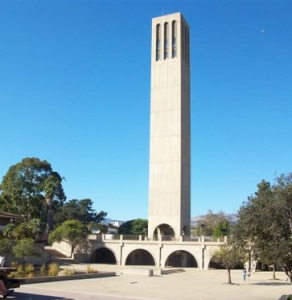CFP: Interpretation in the Visual Arts (Santa Barbara, 26 Apr 13)
University of California, Santa Barbara, April 26, 2013
Deadline-CFP: 1 févr. 2013
The Art History Graduate Student Association 38th Annual Symposium
University of California, Santa Barbara
Histories of Meaning/ Meanings of History:
Interpretation in the Visual Arts
With keynote speaker Whitney Davis, George C. and Helen Pardee
Professor of History of Art, University of California, Berkeley
April 26, 2013
 The term « interpretation » is a staple of our art historical
The term « interpretation » is a staple of our art historical
vocabulary, and this symposium asks graduate students to question both
what we mean by it and how we understand its place within the history
of art and architecture. Interpretation has been defined as « the
bringing into being of a considered text that, if generally accepted,
causes the work of art that is its subject to be viewed in a certain
light. » This implies that interpretation is distinct from other modes
of experiencing artwork, and in turn raises questions: what does or
does not qualify as a « considered text »? What are the conditions for
its being accepted or rejected? Theorists have suggested that
interpretation—as distinct from understanding—implies a conscious
sense of ambiguity and uncertainty in how a work of art ought to be
construed; an awareness, that is, of the possibility of being wrong.
Where and under what circumstances has such awareness been present in
the history of art?
Interpretation in the visual arts has been a contentious matter in
many times and places: the fourth-century Chinese painter Ku K’ai-chih
thought it necessary to insist that « profound appreciation » of good
painting requires no verbal interpretation, while in sixteenth-century
Italy Michelangelo was alternately praised and blamed for producing
images that do require interpretation. In the twentieth century,
Clement Greenberg listed ease of comprehension as a defining quality
of kitsch, while Susan Sontag argued in her essay « Against
Interpretation » that interpretation « violates art » and that « in place
of a hermeneutics we need an erotics of art. » In the meantime
interpretations of all kinds—as well as theories of
interpretation—have proliferated.
We welcome papers from all disciplines that grapple with questions of:
– standards of validity or correctness in interpretation, including
the problem of authorial intention
– the history of engagement with artwork as mediated by explanatory
texts
– difficulty versus ease in understanding art, and exclusion from
knowledge of art’s meaning
– the role and limitations of language in constituting and analyzing
the experience of art
– the history of changes in the interpretation of objects across time,
place and culture
– the distinction between judgment and interpretation, aesthetics and
hermeneutics
– the relationship between intellect and emotion in responding to art
– the role of identity and ideology in the theory and practice of
interpretation
Please submit an abstract of no more than 300 words to
bricker@umail.ucsb.edu by February 1, 2013, with “AHGSA Symposium” as
the subject of the e-mail.
Contact : bricker@umail.ucsb.edu
URL de référence : http://arthist.net/archive/4129

Leave a Reply
You must be logged in to post a comment.